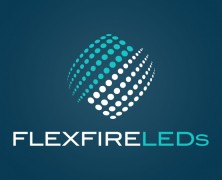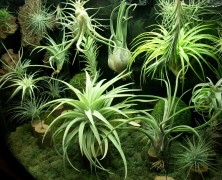Joining similar agricultural studies around the globe, Japan’s Shizuoka University recently found that exposure to red LED light delays aging in broccoli. Researchers from the school’s Department of Biological and Environmental Sciences examined the effects of exposing broccoli to red and blue LED lighting just after harvest, and the results suggest the possibility of both extending the vegetable’s life and improving its nutritional quality. Specifically, exposure to red LED lighting was shown to delay the yellowing process, suppressing ethylene production and reducing ascorbate (AsA). Blue LED lighting did not significantly delay broccoli aging in this way. The full results were originally published in Postharvest Biology and Technology. So what does this mean for a potentially vegetable-optimized future? Will the supermarket produce section soon become a literal red light district? Might red LED kitchen lighting be the next design trend for health-conscious homeowners? Stay...
Flexfire LEDs Announces High CRI LED Strip Lights...
posted by Flexfire LEDs
In keeping with its commitment to providing innovative LED lighting solutions, California-based Flexfire LEDs has announced its new UL Listed UltraBright™ High CRI Series LED Strip Lights. Designed to meet today’s higher lighting quality standards, this new line measures >93 on the color rendering index, fortifying the company’s reputation for delivering cutting edge technology at consumer-friendly prices. CRI, or color rendering index, is the standard measure of a luminaire’s ability to accurately render a specific color spectrum in comparison with a perfect reference source at a given color temperature (i.e. daylight). Simply put, if you direct the light onto a particular object, how natural do its colors look? Testing for CRI is a complicated process, requiring specialized machinery designed specifically for this purpose. Lamps are tested in terms of how they render eight basic colors (or “R values”), termed R1 through R8. A score from 0-100 is given for each color, and these eight numbers are then averaged to determine the lamp’s overall CRI rating. Those measuring above 90 are generally considered highly effective at rendering natural color; for a practical understanding, many of the traditional fluorescent lights that people consider “harsh” or “artificial” measure in the 60-70 CRI range. LED lighting is the established industry leader in energy efficiency, and advanced technological development means LED products are now available at dramatically lower prices than even just a few years ago. This dynamic is driving a worldwide shift to LED lighting, one that is further accelerated by government regulations such as those found in California’s Title 24. Established by the State’s Energy Commission, Title 24 addresses a number of energy efficiency standards, particularly those having to do with lighting. To be classified as “High Efficacy” and thus qualify for utility rebates and other advantages,...
How To Build Your Own Terrarium Grow Light Using LED Strip Lights...
posted by Flexfire LEDs
As both amateur and professional plant enthusiasts have discovered, energy-efficient LEDs are highly effective in virtually any grow light application. The benefits are immediately apparent: LED lights are long-lasting, use very little energy, and will not produce plant-wilting excess heat. As a result, many are installing LEDs in terrariums and other indoor garden applications. One of our customers did just that using UltraBright™ strip lights from Flexfire LEDs, and we asked him to share his experience in order to create a simple tutorial. Follow these steps and learn how to build your own terrarium grow light using LED strip lights. First, a combination of Flexfire LEDs 12v Design Series and 24v Architectural Series UltraBright™ strip lights were mounted onto aluminum bars and channels. This allows custom configuration, and the aluminum acts as a heat sink for the LEDs, helping them perform better and last longer. These aluminum bars are inexpensive and easy to find at any home improvement store. Adhesive pads were attached to the end of each bar; these pads rest on the rim of the terrarium. The power connection was soldered to the LED strip light, and a nylon tie was used to secure the power cables and protect the solder joints from any jarring movement. Finally, a blob of silicone was applied to insulate the solder points. The above process was repeated for the aluminum channels, also easily available at any home improvement store. Below left, a smaller aluminum channel was bolted onto two sides of the terrarium. Right, a view from below showing all the illuminated channels. Below left is a view from above one of the bars, which was painted black. The lights are on the underside, directed down at the plants. Also, a close-up...








